Stock trading requires traders to stay updated and swiftly tap into the latest trends to make hay when the sun shines. In other words, make the most profits. For that, you’ll need a powerful and fast laptop.
But what makes a laptop powerful for trading stocks? Well, a powerful processor to open multiple tabs and apps simultaneously, a vibrant and bright display, a good battery if you travel much, and a keyboard that’s easy to type on.
Simple, right? I’d say, no, and that’s coming from a techie who’s been using and testing computers for several years. Despite high-end specifications, you might end up with a sub-standard device.
This is why I got 16 laptops well suited for trading, tested each across multiple aspects, and narrowed it down to the top 8 picks. I’ve reviewed each in detail to help you make the best decision.
So, without further ado, let’s dig in!
System Requirements
| Specification | Minimum | Preferable |
|---|---|---|
| Processor | Intel Core i5, AMD Ryzen 5, Apple M1 | Intel Core i7, AMD Ryzen 7, Apple M2 |
| RAM | 8GB | 16GB |
| Storage | 256GB SSD | 512GB SSD or higher |
| Display | 13-inch Full HD VN | 15.6-inch Full HD IPS |
| Battery | Up to 6 hours | Up to 8 hours |
| Connectivity | Wi-Fi 5 and USB-A | Wi-Fi 6/6E, USB-A, USB-C, and HDMI |
Note: Whether you’re looking for a high-end, mid-range, or budget laptop, this list has it all.
1. Best Overall: ASUS ZenBook Pro Duo
ASUS ZenBook Pro Duo 15 is one of the few laptops to feature dual screens. The primary one is a 4K OLED, making it arguably the best for stock traders who wish to have an ultimate multitasking and content creation experience.
And yes, there’s a lot on the plate here: beefy processor, powerful graphics card, and a classy design that stands out amongst the sea of machines.
Performance & Experience
ZenBook Pro Duo is striking, to say the least. It’s large yet sleek with a second display or ScreenPad Plus, which tilts up to improve the viewing angle and opens an additional pair of fans to circulate heat through the chassis.
Let’s start with the top, which is a 15.6-inch OLED display with a 3840 x 2160 pixel resolution. As expected, the vibrant colors, appreciable brightness, and details make for an impeccable viewing experience, even at awkward angles or outside.
This is especially beneficial when analyzing stock charts to identify trends & patterns and tracking real-time stock movement.
The secondary display has a 3840 x 1140 pixel resolution but has an IPS panel and not OLED. In comparison to the top, colors feel a tad flatter and duller, but still great for someone hoping to ink on it.
But to accommodate two screens and ensure an optimal footprint, it shuns down the keyboard size, and a trackpad with an embedded numpad is on the right.
The layout may be uncomfortable for those who keep the laptops in their lap, as the hands travel all through the body to type. But the deskbounds won’t have any issue unless they’re lefty.
Typing with an elevated angle is rather comfortable, and the second display is easy to read. The spacious key layout with a fair amount of travel adds to your typing speed. Mine averaged at 75 wpm at a 2% error rate.
Besides, the trackpad is wide, which makes for simple gestures, and pressing a small icon on the top opens a calculator, which you can use as a numpad as well.
Performance is one of the top-selling points of this laptop. A 4.7 GHz Intel Core i7 chip coupled with 16GB RAM provides a truly impeccable performance on a range of content creation tasks. And a GeForce RTX 3070 Ti GPU adds a cherry on top.
Aside from multitasking on 6-7 apps with 10-12 tabs open in Chrome, apps like MT4 & Velocity didn’t lag or stutter once.
Battery Life
Battery is indispensable for stock traders, especially those who are always on the go. I was, however, a tad disappointed when streaming a 4K video at 50% brightness and 100% audio on both screens simultaneously could continue for up to 5 hours and 11 minutes. Shutting off the secondary display nets up to 6 hours and 50 minutes. The second scenario is rather decent.
Ports & Connectivity
ZenBook didn’t skimp on ports, as on the right side, there’s a pair of Thunderbolt 3 ports and a USB 3.1 Gen 2 port. On the left, there’s an HDMI port, a DC-in, and a 3.5mm audio jack. So, you don’t need an adapter to plug in peripherals.
Conclusion
Overall, Pro Duo is multitasking heaven with dual displays, a powerful CPU, and a set of Thunderbolt ports. A dedicated GPU is helpful if you’re into any creative tasks like interior designing, rendering in Fusion 360, and even gaming.
Not to mention, stock trading was seamless with this beast. But a better battery life would have made things even better.
- Two displays for multitasking
- Powerful H-series processor
- Dedicated high-end GPU
- Impeccable design
- Excellent performance
- Average battery life
- Pricey
2. Best Runner-Up: Dell XPS 15 9530
If you don’t want your display to cramp up the keyboard/touchpad, and a single display should fare, then go for the Dell XPS 15 9530.
It’s an all-around machine with an attractive design, more ports, and a better processing setup to process the real-time market data quickly and let you make informed and timely trading decisions.
Performance & Experience
Dell XPS 15 uses a 15.6-inch 60Hz FHD+ display with a 1920 x 1200 resolution. The 16:10 aspect ratio is more popular in productivity and gaming laptops below $2000, and Dell sways with the trend, making it not the best option, but certainly good enough for stock trading.
Unless you aren’t engaged in creative work/playing multimedia much, it is a worthy one. The screen passed my eyeball test, which showed brilliant and bright colors even outdoors, at a maximum brightness of 422 nits.
The charts & graphs are easily visible, and despite my lengthy trading sessions, there wasn’t any eye fatigue or discomfort. Moving on, the quality of materials extends beyond the exterior.
The keyboard deck is finished with carbon fiber, and the keys aren’t shallow, ensuring an excellent typing experience. I could type up to 73 words per minute.
The touchpad, as well, is roomy and records the types and gestures (even three-finger zoom) well. However, it doesn’t bring a dedicated numeric pad, which is essential for accounting.
The i7-13700H scores a higher benchmark score than the i9-12900H. It further couples with 32GB DDR5 RAM and 1TB SSD, so I could easily run multiple trading software, news feeds, charting software, and analysis tools concurrently without any lags. And despite integrated graphics, it wasn’t an issue running heavy apps.
Battery Life
In my usual series of tests, where I played a pre-saved 1080p video at 60% brightness and 100% audio output until the system turned off. The total duration was around 13 hours and 15 minutes, so your lengthy trading sessions should pass by without looking for a power plug.
Ports & Connectivity
The Port setup is rather decent. There’s an SD card reader, two Thunderbolt 4 ports, a USB 3.2 Gen 2 port, and a 3.5mm audio jack to ensure fast data transmissions across multiple devices. You can pair an external monitor with Thunderbolt ports for multi-window trading.
Conclusion
Dell XPS 15 is more or less what you expect from a company’s flagship device. Its fresh components deliver a truly fast and long-lasting performance while keeping the machine’s premium build intact.
The display might not be as exciting as my top pick, but it shouldn’t be an issue even in the outdoors and bright light.
- Fast performance
- Premium build quality
- Long battery life
- Keyboard and touchpad feel fine
- Thunderbolt ports for faster data transfer
- No discrete GPU at this price
3. Best 2-in-1 with Stylus: HP Spectre X360
If you’re a fan of convertible laptops, then I’d suggest opting for HP Spectre X360. Its large, high-resolution OLED touch panel, paired with fancy features and faster performance, makes it easy to keep track of charts and trends. Besides, bundles a stylus pen for browsing through stock details, taking notes, etc.
Performance & Experience
OLED displays are characterized by sky-high contrast, unbeatably brilliant colors, and ink blacks, and the 3K+ display of HP is no exception. Plenty of brightness and pristine white backgrounds enhance the visibility and readability of graphs & charts, reduce glare, and in turn, let you trade in any lighting conditions.
Besides, as in the name, Spectre X360 has a touchscreen display with ten touch points that you can operate with the fingers, as well as the included HP tilt pen. The latter feels smooth, and I can make clear annotations, sign documents, and seamlessly toggle between the apps.
But in Painter or Photoshop, the sensitivity of the pen wasn’t great, as it left random dots on the artwork. Using fingers seemed a better way out here. The keyboard and touchpad are the positives here.
Its chiclet keyboard has a short travel and clear pressure point for fast typing, while the touchpad is responsive and even records multi-finger gestures (like zoom in & out) well. That’s music in the ears for those who type, even on the go.
Convertibles aren’t specifically known for their performances, but I was surprised by what Spectre X360 has to offer. With a 12th Gen Core i7 processor, coupled with 16GB RAM and 512GB storage, multitasking was a breeze. Even toggling through 5-6 trading apps and multiple Chrome tabs open at a time, there wasn’t a single stutter or lag.
Battery Life
Being one of the top travel laptops, convertible typically packs in a powerful battery. And same is true with HP, with its stipulated battery life of up to 17 hours. To test it out, I went on to trade stocks with a 2K video playing at 50% brightness and 100% audio. On a single charge, I could use it up to 13 hours straight, which is great.
Ports & Connectivity
X360 has ports for every device one has at its disposal. Be it its two Thunderbolt 4 ports for superfast data transfer (up to 40 Gbps), one USB-A port, an HDMI port for media output (if you wish to watch the live feed on a large monitor), an SD card slot, and a 3.5mm audio jack. It even betters my top recommendation.
Conclusion
There aren’t any contrasting limitations, except for the tilt pen, which isn’t great for painting/photo editing, which is not a major concern for stock traders. That said, it hits a home run in most aspects, performance, display, touch, etc.
- Convertible design
- OLED touchscreen
- Long battery life
- Great performance
- Tilt pen is included
- Excellent keyboard & touchpad
- Tilt pen is not great for painting/editing
- Bit heavy for a tablet
4. Best with AMD CPU: Acer Swift Edge 16
If you aren’t a big fan of convertibles (like me) and are looking for a powerful laptop at a similar price range, then Acer Swift Edge 16” is the best on offer.
This laptop, with a powerful AMD Radeon processor, 4K OLED display, and an integrated graphics card, delivers a robust and balanced performance in a thin profile.
Performance & Experience
Despite a 16-inch OLED panel, the Swift Edge is ultraslim and portable and delivers an infinite contrast ratio and deep black levels that enhance the visibility of details in dark scenes.
Movies and games, especially in the horror genre, are a treat to watch on this. The color performance and brightness are great as well. Even in the bright sun, I could gauge the graphs well for better analysis.
Moving on, the large display of the laptop offers ample space for a spacious and comfortable keyboard layout with a separate numpad.
The flexible chassis allows significant wobble when typing at high speeds, which results in a hollow, squishy experience. That’s not bad news, however. A reasonable travel distance and a keyboard backlight make for comfortable typing.
The touchpad, although it feels quick and responsive, is rather small for a 16-inch laptop and makes Windows multitouch gestures feel cramped. The experience isn’t terrible as such, but I have seen laptops offer more space.
Performance of the device is top-tier, thanks to its AMD Ryzen 7 processor, AMD Radeon Graphics, and 16GB RAM. Multitasking with trading apps open in foreground, and multiple Chrome tabs open in the background was a breeze.
But I was especially impressed by its 2 TB SSD, the highest I’ve seen. Saving thousands of documents and hundreds of movies won’t wear it out.
Battery Life
Battery life of the Swift laptop is rather disappointing. It encases a 54W battery compared to the competition’s (LG Gram 16”) 80W battery, and hence, an unimpressive 7.5 hours of battery life.
I recorded roughly six hours of video playback at 50% brightness and 100% audio output. Results were similar in my day-to-day stock trading, so there’s always a need to carry a charger.
Ports & Connectivity
Acer didn’t skimp on ports, as there are two USB-A and two USB-C ports, an audio jack, and an SD card slot. Although it lacks any Thunderbolt 4 ports, the transfers over USB-C ports were pretty fast. You, however, need an adapter to connect a large monitor or smart TV.
Conclusion
Acer Swift Edge 16” is a thin yet robust laptop that pairs a gorgeous 16-inch screen with a portable display that makes for a great viewing experience even in well-lit conditions.
The battery life and minor issues with the trackpad and keypad hold the laptop back from stardom, but I’ve seen worse in similar laptops. And it’s an excellent performer, making it an alluring value pick.
- Extremely thin and light
- Strong performance
- Gorgeous OLED display
- Keyboard and trackpad feel fine
- Decent setup of ports
- Mediocre battery life
- Weak speakers
5. Best for Professionals: Apple MacBook Air
If you’re a fan of the Apple ecosystem and need a good one to trade stocks, take a look at the new MacBook Air 15. It does best in areas it’s expected to: display, performance, battery life, and overall build, even outperforming my previous recommendation in a few aspects.
And it’s one of the biggest screens in the company’s lineup, making lives much better for stock traders.
Performance & Experience
Display is the USP of MacBooks, and nothing’s different with this device. Its 15.3-inch Liquid Retina display with a near-3K resolution is one of the best I’ve seen. It is very bright, and the contrast is great, but the colors aren’t on levels with Windows OLED counterparts.
I used the MacBook to stream Oppenheimer, which has plenty of dark shots of a bomb alongside B&W high-contrast scenes. The bright panel made both and the orange & red explosion effects look striking.
Even in the bright sun, the visuals were sharp, and I had no trouble identifying the ups and downs in the share market.
Moving onto the keyboard, I wish it had more travel distance, but it overall turned out pretty great. The design was copied from its previous generations, so the keys were responsive and not wobbly. On the monkeytype typing test, I hit 75 wpm at a 2% error rate, which is as good as I do.
The touchpad is bigger than its 13-inch variants and is just as good. It’s smooth, the haptics are convincing, and feels premium. Besides, gestures like using three fingers to show all of my apps, or pinch to zoom in or out, worked on the first try. I can even vouch these touchpads are the best out there.
MacBook’s processing setup with an M2 chip, 16GB RAM, and a 10-Core GPU is up for most office work, video streaming, web browsing, and day trading. It seamlessly juggled through plenty of apps. And for those needing to save a lot of documents, its 512GB SSD should be enough.
Battery Life
Thanks to the energy efficiency of the M2 chip, the MacBook comes out great when it comes to battery life.
In my staple battery test, the 15-inch Mac lasts up to 15 hours and 32 minutes, probably the highest of the lot. So you can travel anywhere with it without worrying about exhausting the battery.
Ports & Connectivity
In this section as well, MacBook Air M2 achieves middling scores. There are two Thunderbolt 4 ports for fast data transfer, a USB-A port, a 3.5mm audio jack, and a MagSafe 3 charging point. HDMI and an SD card slot are missing, so you need an adapter if you need such connections.
Conclusion
If you need a powerful laptop with a vibrant display backed by Apple branding, the MacBook Air 15 comes as a great choice. The battery life, keyboard, and performance are great, making it a great choice for traders. But its low storage and limited port setup are the reasons it’s ranked in fifth place.
- Sleek, thin, & portable design
- Long battery life
- Powerful M2 chip
- Display is very bright and colorful
- Speakers are powerful
- 256 GB SSD
- HDMI port & SD card slot is missing
6. Best with 14 inch: Lenovo ThinkPad X1 Carbon Gen 10
Lenovo has gained a decade-long reputation for delivering industry-leading business laptops that sit on the list of the best in terms of productivity.
If you feel the MacBook is over budget and even leaves you cramped for storage, take a look at the Lenovo ThinkPad X1 Carbon Gen 10. The processor, storage, and display fare well with most stock trading tasks.
Performance & Experience
ThinkPad X1 Carbon with a 14-inch 1920 x 1200 display doesn’t seem as great as my previous recommendations, but it produced sharp images with solid color reproduction and wide viewing angles.
The brightness isn’t the greatest at 400 nits and barely manages in a well-lit environment. Details, however, were still there, which is great.
The best part about it is the 16:10 aspect ratio, which is great for editing documents, surfing the web & news feeds, and viewing more data, thanks to an 11% more vertical screen than a 16:9 display. The movies, however, have slightly large bars, as they mostly have a 16:9 aspect ratio.
Coming to the keyboard, I found it quite snappy and responsive. The slightly concave form of the keys and plenty of travel make it easy to type on it. The soft touch material on the palm rest keeps my wrists comfortable as I hit 91 wpm at a 3% error rate.
I also appreciate the inclusion of a TrackPoint mini joystick which lets me navigate around the desktop with great precision. Multitasking efficiency increases by folds when you can move the cursor without lifting the hands. Whether you’re a stock trader, business personnel, or similar, you’d appreciate this machine.
However, if you don’t like the red knob, you can always ignore the glass touchpad, which registers pretty accurate movements and responds flawlessly to multi-touch gestures.
You also don’t have to compromise with the performance. The Core i7 processor, 16GB RAM, and 1TB storage ensure multitasking on plenty of trading apps, and Chrome tabs don’t produce any stutter or lags. Even after my prolonged trading sessions things almost stayed the same.
Battery Life
The battery of ThinkPad X1 isn’t great, as it runs up to 8-9 hours on a single charge when I use it for my daily work-based/stock-trading tasks. It even dips into 6-7 hours if you pump up the brightness levels. While its competitors are lasting for around 13 hours on the same test, it’s a bit of a letdown.
Ports & Connectivity
Considering how thin X1 is, Lenovo has done a great job fitting in all the major ports one needs, including two Thunderbolt ports with one working as a DisplayPort, an HDMI port, and an audio jack. It misses an SD card slot, which, however, is a rare sighting in laptops to use for trading.
Conclusion
Overall, ThinkPad X1 Carbon has almost every ingredient you need to be productive, whether you’re seated on a coach or a couch. Its display is decent, the keyboard feels a joy to type on, a joystick for accurate navigation, two Thunderbolt ports, and a good webcam.
Its brightness is a bit low, one among a few limitations, the reason why it’s ranked at the sixth spot.
- Decent display
- Best-in-class keyboard
- Joystick for accurate navigation
- Great mix of ports
- Excellent performance
- Not very bright
- Short battery life
7. Best 17-inch Option: LG Gram 17Z95P
A large screen real estate, decent processor, great display, and keyboard seems like a laptop that costs around $3000. But LG defies all the norms with Gram 17Z95P by pricing it around $1000, and despite a large build, it continues to stay below three pounds. It’s a great 17-inch laptop to invest in if you’re a professional stock trader.
Performance & Experience
LG Gram’s aesthetics won’t wow anyone when opened up, in fact, I found it rather inconspicuous. The display was, however, built differently.
At a resolution of 2560 x 1600, the 17-inch screen is why the laptop is so big. But in a sense, it’s a blessing in disguise. The heightened display and its QHD resolution mean you have more real estate shown on programs and web pages.
Although the colors were sharp but a maximum of 300 nits brightness means things get a bit tricky outside or in a well-lit environment.
The keyboard, however, stands out. The keys have a bounce, and each turned out responsive enough to ensure typing never becomes a chore. I could hit my best 96 wpm at a mere 2% error rate, which is typical for me.
As an addition, its power button doubles as a fingerprint scanner for secure login. The sensor is fast & accurate, requiring just a touch. Moving on, I had a mixed experience with touchpad. It was responsive, and toggling between tabs wasn’t an issue, but the surface wasn’t as smooth, and clicks felt wobbly to a certain degree.
LG didn’t impress me much with its design but isn’t a slouch under the hood. Its Intel i7 processor, despite being a tad old, did a great job at multitasking. I could juggle between multiple Chrome tabs, trading & messaging apps on the go simultaneously.
And thanks to a 16GB RAM & 1TB SSD, the laptop could perform tasks quickly, even under the stress of doing so much at a time. My client also used it to edit photos, which he found enjoyable and accurate.
Battery Life
Battery, however, is the star of the show here, as LG has instilled an 80W battery, which registered hours in double digits in my tests. I could watch the live feed on “Fidelity” while another window played a pre-saved 1080p video at 50% brightness and 100% audio output.
The battery could last up to 12 hours and 31 minutes, so it’s safe to say that it lasts you a full workday without needing to plug in.
Ports & Connectivity
For those who have multiple devices to connect at once won’t be disappointed either. There’s a Thunderbolt 4 port for fast data transfer, two USB 3.2 ports, a microSD card slot (rare in these laptops), and an HDMI port. You can slot in large monitors, projectors, or smart TVs to present something or run the stock market live.
Conclusion
LG Gram’s obvious strengths are its massive and gorgeous screen alongside its super-light carry weight. These two are enough to lure users but to make things even better, LG also includes a powerful processor and battery. It’s easy to type on, but I found the touchpad a bit wobbly, which can be an inconvenience for some users.
- Sleek design
- Amazingly light for a 17-inch laptop
- Brilliant QHD display
- Comfortable keyboard
- Great performance
- No touchscreen
- Bit wobbly touchpad
8. Best Budget Option: Microsoft Surface Laptop 4
If you aren’t a professional stock trader and a powerful laptop like my previous recommendation seems like overkill, then opt for a budget yet reliable Microsoft Surface Laptop 4.
This touchscreen device boasts a gorgeous display alongside a decent set of features to ensure you never miss a beat when trading stocks.
Performance & Experience
The 15-inch, 2256 x 1504 pixel screen of the Surface Laptop 4 has its charms, especially if you’re reading, writing, stock trading, or anything that benefits from the extra vertical space afforded by its 3:2 display ratio. The details were there, and none of the data was fazed out.
My experience with watching a video was a mixbag. I liked how bright colors popped off the screen, as in the bright orange explosions in Oppenheimer, but the dark scenes or settings with muted blue/green seemed to fade or blend into each other, making it difficult to gauge the detail. But the brightness was decent for people just to make it through when they’re traveling.
Moving on, as with most Microsoft keyboards, typing feels comfortable. The keys are nicely sized with decent travel distance and nice click which responded without needing to press them all the way down. Beneath the keys, the glass touchpad is quite nice to use, and I had no issues using gestures.
Unless your job involves plugging in two or three screens at a time with settings cranked up, this Microsoft laptop can pretty much handle anything you throw at it.
My review unit has a Ryzen 7 processor that has enough pep to tackle three to four stock trading apps & 8+ Chrome tabs open at a time. Its 8 GB RAM & 256 GB seems a bit underwhelming, but it gets the job done with ease.
Battery Life
Similar to my previous recommendation, the battery is Surface’s biggest selling point. Here, manufacturers claim to last up to 17.5 hours on a single charge.
Although in my test, the charge didn’t last long but I could get through 10 hours of active stock trading while listening to music & watching videos without worrying about running out of juice.
Ports & Connectivity
Despite doing a decent job in most aspects, I feel Microsoft did skimp out when it comes to the port setup. There’s a USB-C & USB-A port, a 3.5mm jack, and a Surface Connect port.
Although you can’t expect a Thunderbolt port at this budget, I liked the exclusive surface connect port, which you can use to charge, and transfer data, and as a DisplayPort video.
Conclusion
Overall, Surface Laptop 4 comes as a massive upgrade over its preceding models, as it offers a bloatware-free ultraportable with many premium components packed inside.
The display is decent, and the keyboard feels nice to type on. I also liked how long the battery lasts, but could’ve improved a bit on display brightness and port setup.
- Light, slim design
- Good battery life
- Comfy keyboard
- Decent performance
- Budget-friendly
- Needs more ports
- Display brightness is not great
Frequently Asked Questions
Stock trading mostly involves multitasking with multiple apps/tabs open in the background, so you’ll need a laptop capable of handling that. Prioritize more over the display quality and size, touchpad, keyboard, processor, battery, and RAM, as an integrated GPU would suffice.
Although laptop size depends on personal preferences and use cases, but I feel that one with a 15-inch screen, 16:10 aspect ratio, and HD+ resolution should be the best suited.
For stock traders who need mobility and flexibility, a laptop with a battery life of at least 8 hours is a good starting point. However, the ideal battery life is based on individual needs and usage patterns.
Wrap Up!
With that comes an end to my detailed review-based guide. Before leaving, I’ll write up the best in each category, so making up your mind becomes even simpler. Here I go:
- If you are a professional who is used to opening the stock market on two screens at a time, then rather than investing in another monitor, get the Asus ZenBook Pro Duo.
- If you don’t have the facilities for that, get one with a big screen and decent performance, so invest in Acer Swift Edge 16.
- And if you need a budget big-screen laptop, opt for LG Gram 17. It’s a decent performer as well.
- Lastly, you can opt for the cheapest, i.e., Microsoft Surface Laptop 4.
I hope my recommendations helped you find your ideal stock trading laptop. Let me know in the comments if you have any queries or suggestions. See you in another such guide!
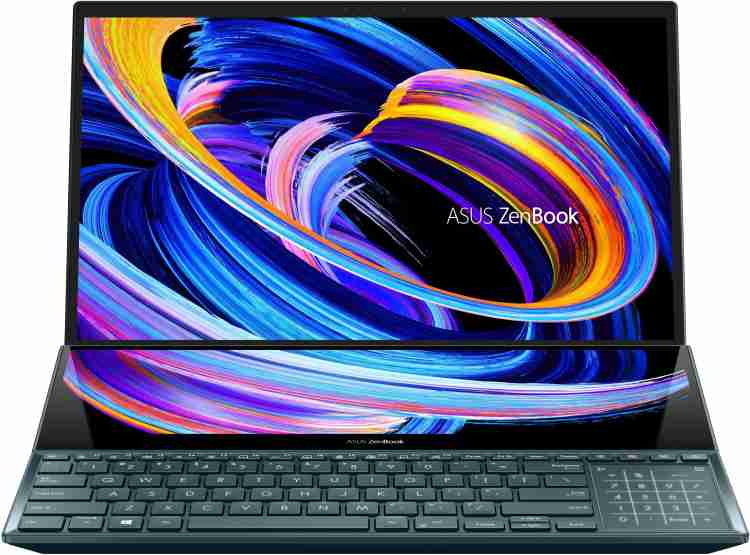
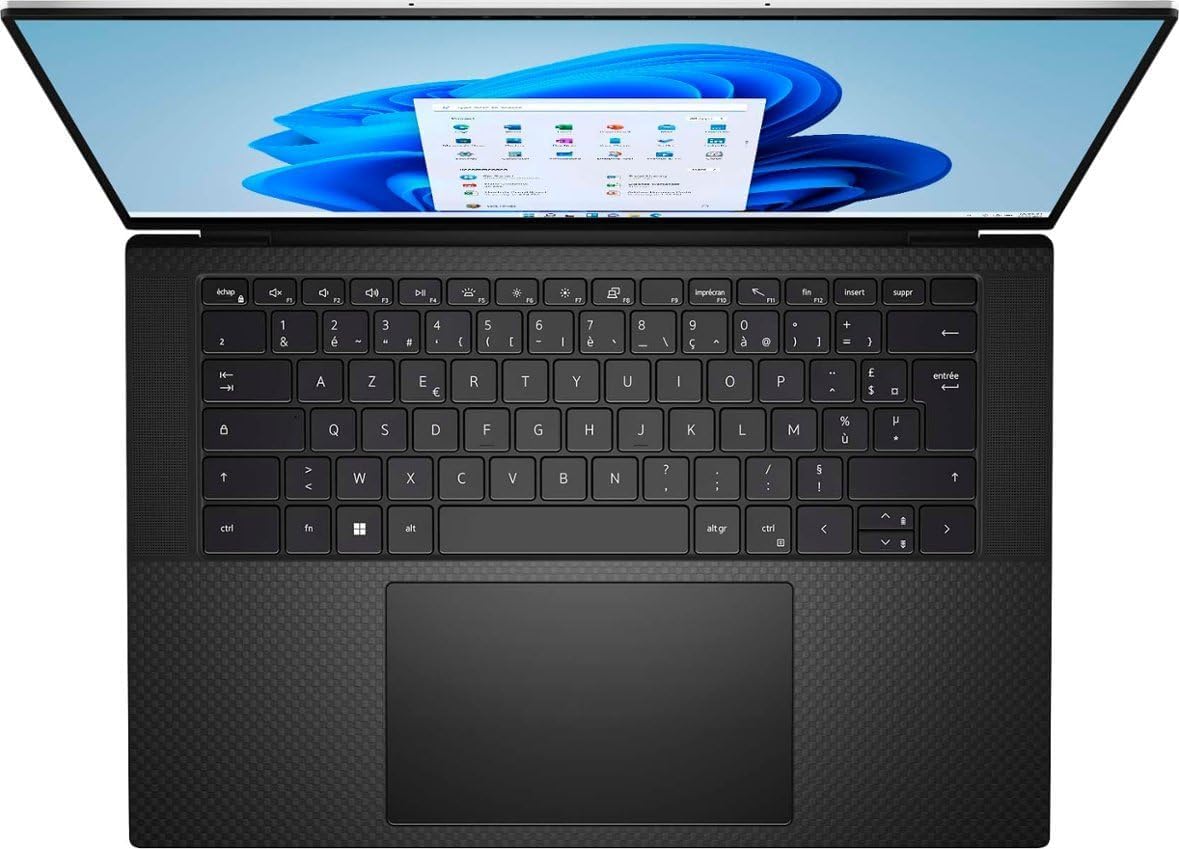
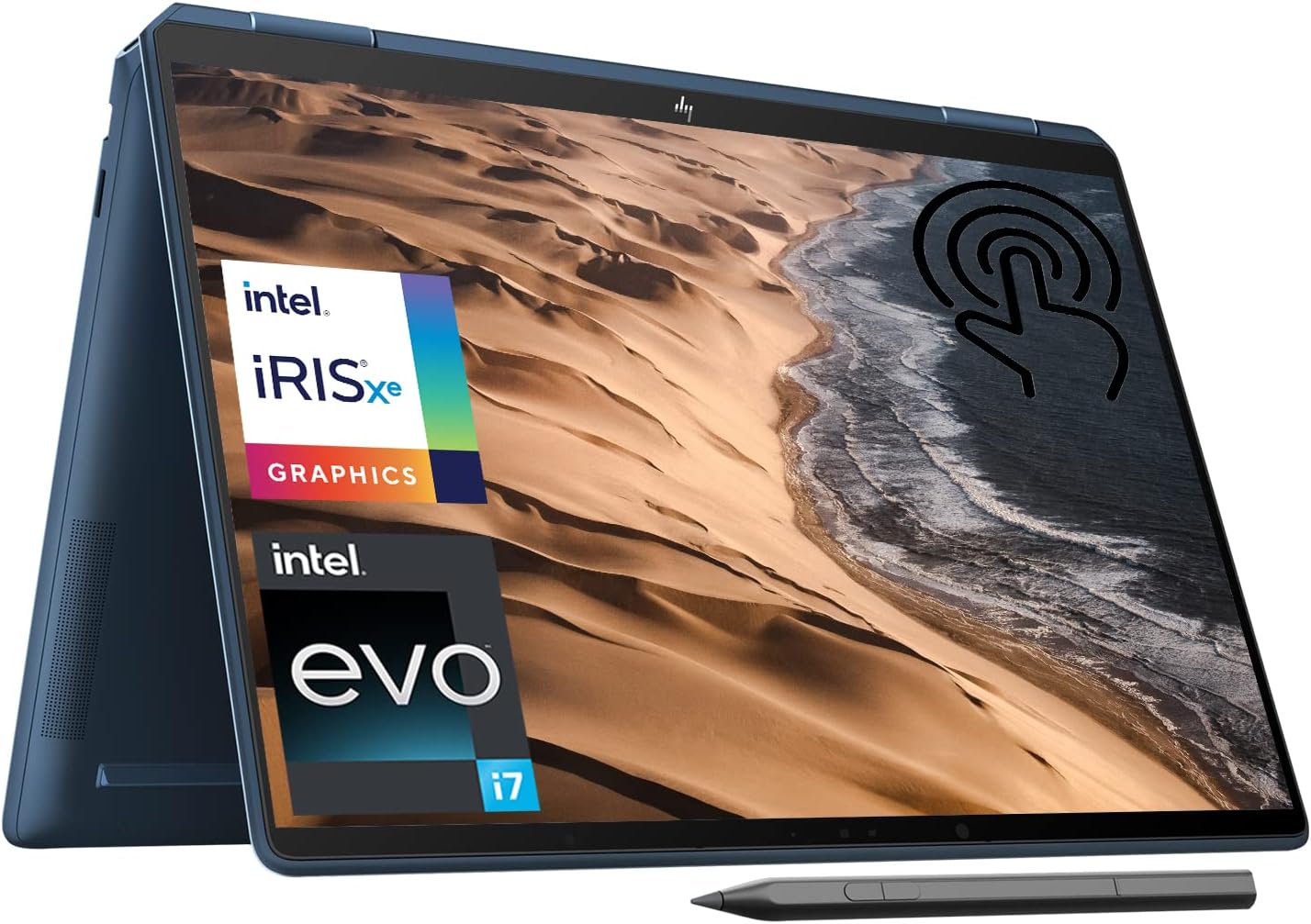

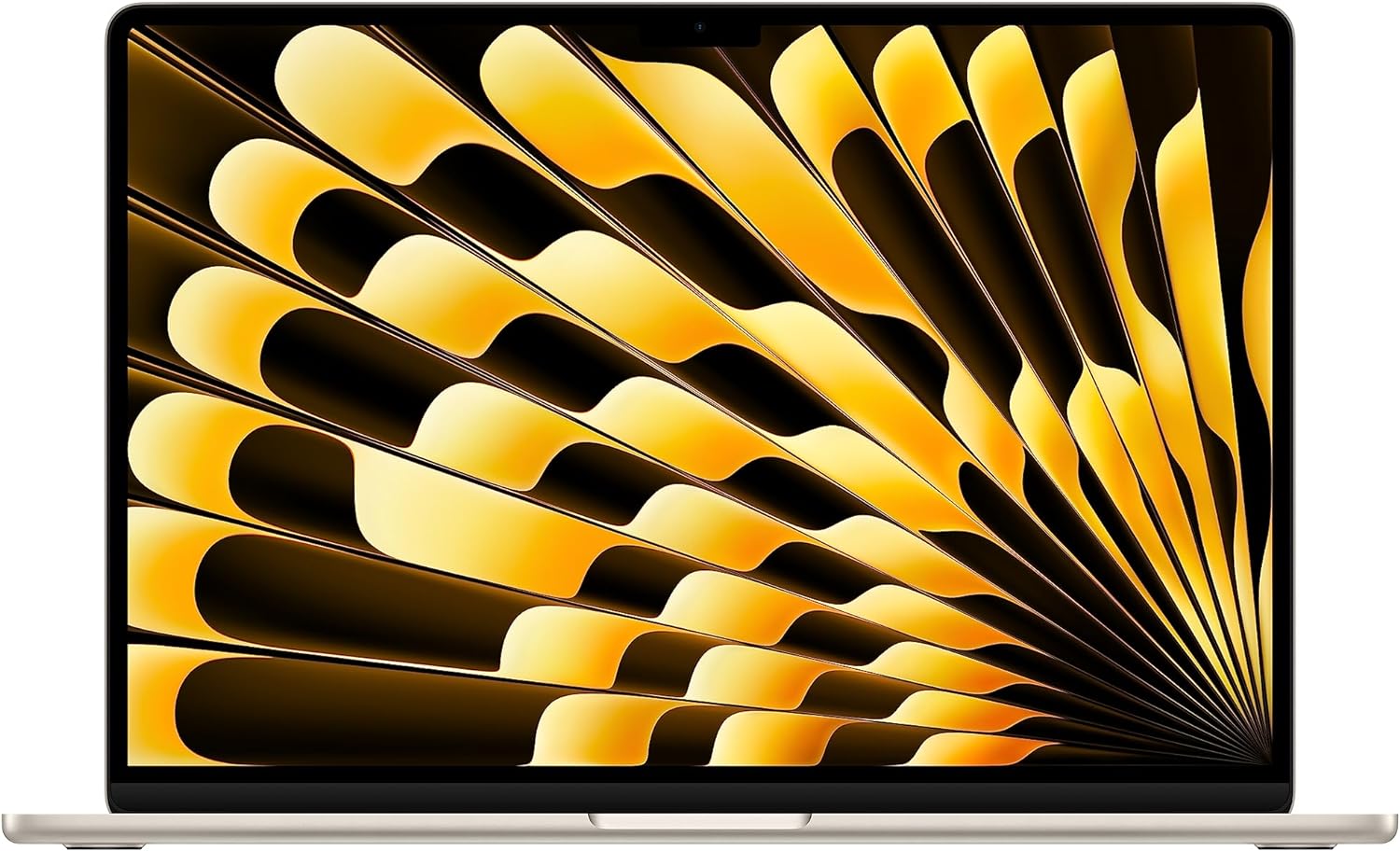
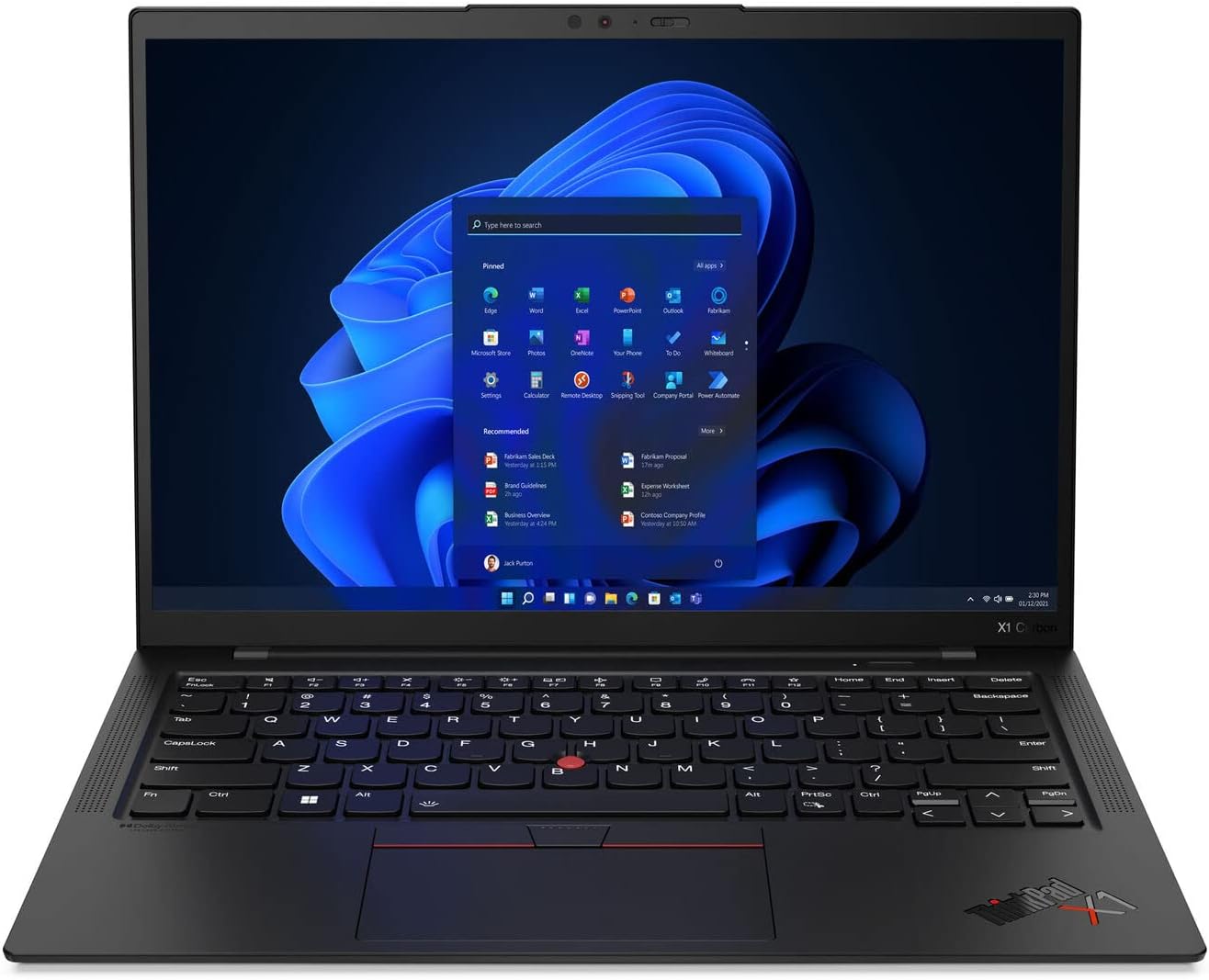
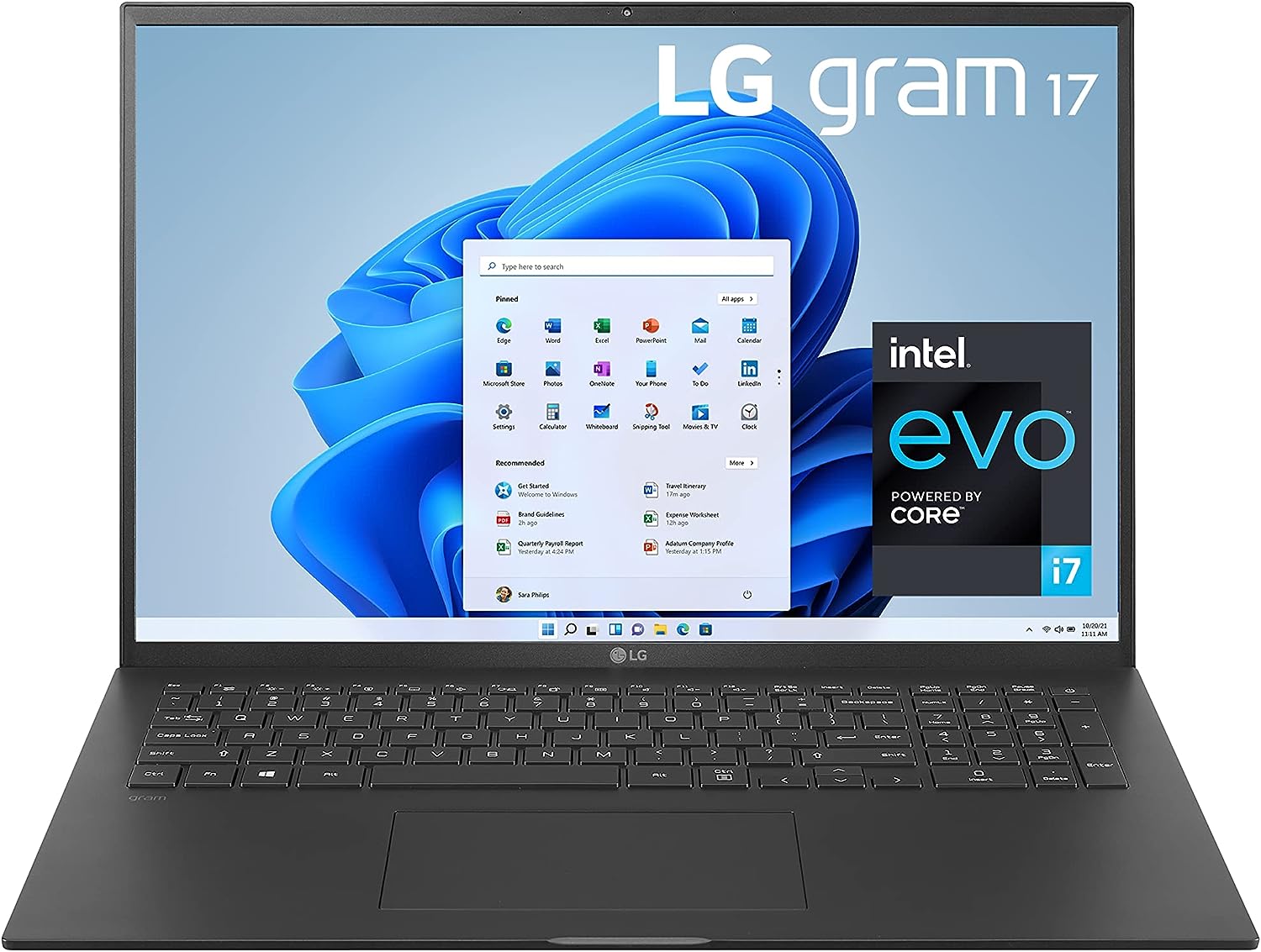
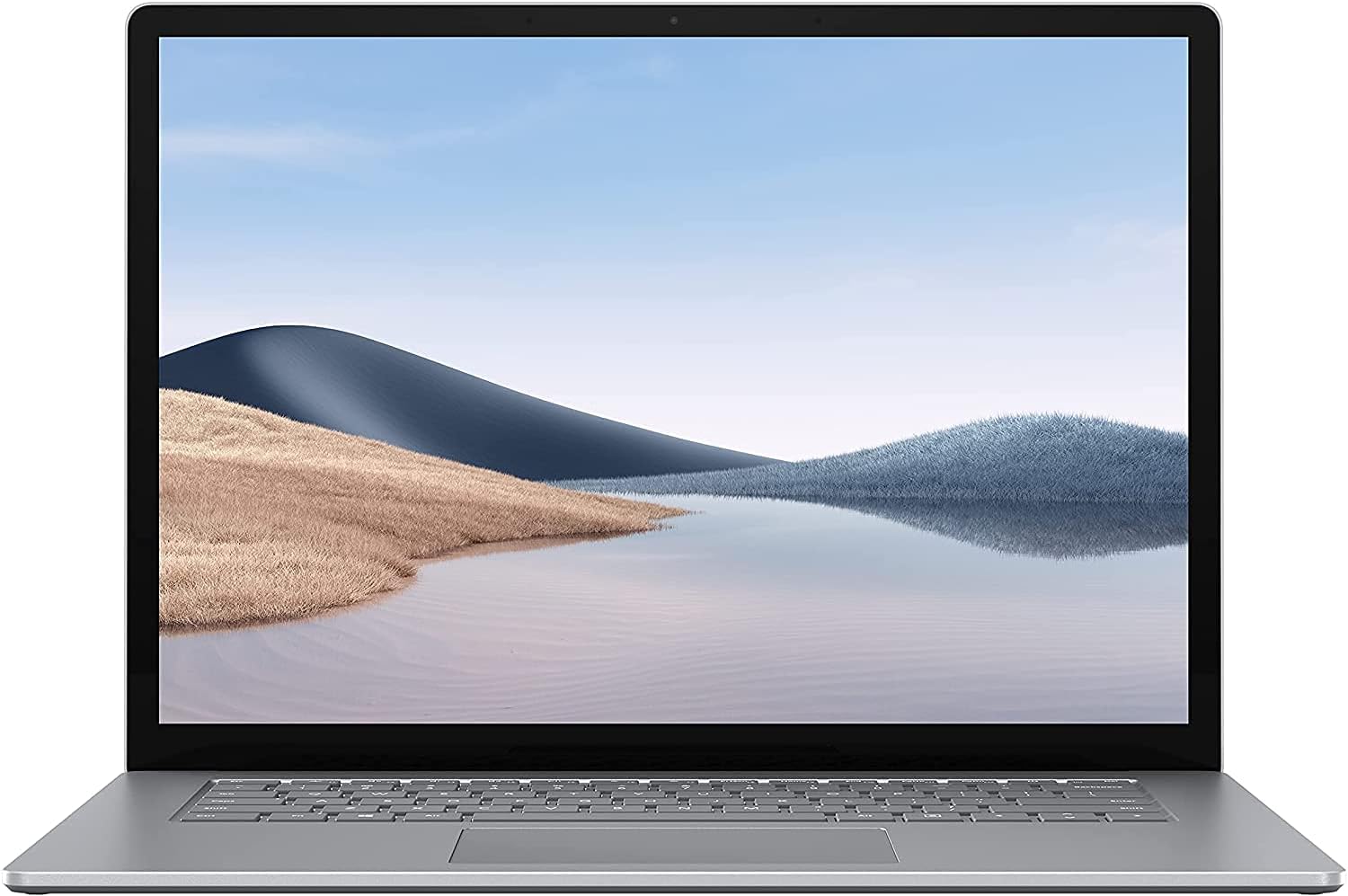
Leave a Reply